If you don’t play slide guitar, start now. It’s easier than you might think. Just follow the Funkadelic principle: “Free your mind and your ass”—or in this case, your fingers—“will follow.”
There are no limitations of genre or technique with slide. The slide empire extends from the stab ’n’ slice of Delta blues granddaddy Son House to the whinnying cries of Muddy Waters, the bare-knuckled rumblings of J.B. Hutto to the righteous roots of Ry Cooder, the infinite sonic universe of India’s Debashish Bhattacharya to the modernistic wail of the Edge, and the free-flying jazz of Sonny Sharrock to the omnivorous odyssey of Derek Trucks, with all kinds of artistic stops between. And it doesn’t matter if you’re a shred master or just learning basic chords. Everybody can do it—trust me. You only need two things to play slide: a guitar and, of course, a slide!
Let’s assume you’ve already got the guitar—and in this case, we’re talking conventional roundneck guitars, verses lap or pedal steels, or squareneck resonators. (For a jump start on playing lap steel, read Senior Editor Andy Ellis’ “Hand Jive! Master the Fundamentals of Lap Steel” on premierguitar.com.) Some say you need to raise a guitar’s action for slide, and while that’s an option, it’s typically unnecessary—especially if you’ll be playing electric guitar with at least a tad of distortion. That’ll cover up any minimal fret or neck noise. And honestly, when I hear the occasional “clunk” of a slide on the neck of an acoustic guitar, I just consider it part of the approach’s charm, reminiscent of cool field recordings of Fred McDowell, R.L. Burnside, and other great rural American sliders who I admire. When you’re in the early stages of slide discovery, let nothing discourage or distract you from the quest.
With a trusty guitar at the ready, the next tool you need is a slide. Here’s where things can seem complicated. The market is flooded with slides made from a wide variety of materials and with differing dimensions. But the only thing that’s important is finding the slide that works and feels best for you. There are three factors to consider in choosing the right slide: size, weight, and material. Let’s tackle size—both length and girth—first.
Long steel slides are popular with beginners. They’re easy to find, and with their fretboard-spanning reach, they don’t demand much subtlety, but they can also be cumbersome. The bottom line is that slide selection is ultimately subjective. Photo by Andy Ellis
Mutt or Jeff?
Some players dig a long side that fits across all six strings. Certainly, with a longer slide the accuracy of your fretting hand is less important. Such fretboard-spanning slides make it easy to play full chords in open tunings and, provided you’re accurate with your picking hand, hit the notes you want to ring out. It’s easy to find long slides, too. Almost every slide manufacturer, from giants like Jim Dunlop and Fender to one-man operations like Colorado’s Rocky Mountain Slides and Austin’s Glassbender Guitar Slides, makes them. But long slides aren’t right for every player—especially if you’re aiming for precision and optimum control over dynamics.
Long slides are typically a little more cumbersome than their shorter kin. With few exceptions, they have a wider interior diameter that causes them to wear loosely on your finger—especially if you play with a slide on your pinky. This means that to play with a longer, looser slide, you need to use at least two fingers—one to wear the slide and one next to that to stabilize the slide from wiggling—at all times. Years ago, when I showed up with a big steel slide for a lesson with country blues virtuoso Paul Rishell, he asked me, “Why are you trying to play with a sewer pipe on your finger?” I laughed, but when he let me try his shorter, tighter-fitting slide, I could instantly play with more accuracy and comfort. That said, when Duane Allman wasn’t using one of the lightweight Coricidin bottles he most famously employed for slide, he often brandished a big, heavy-ass, 6-string-spanning brass slide. As in all things slide, it’s a matter of personal taste, comfort, style, and mood.
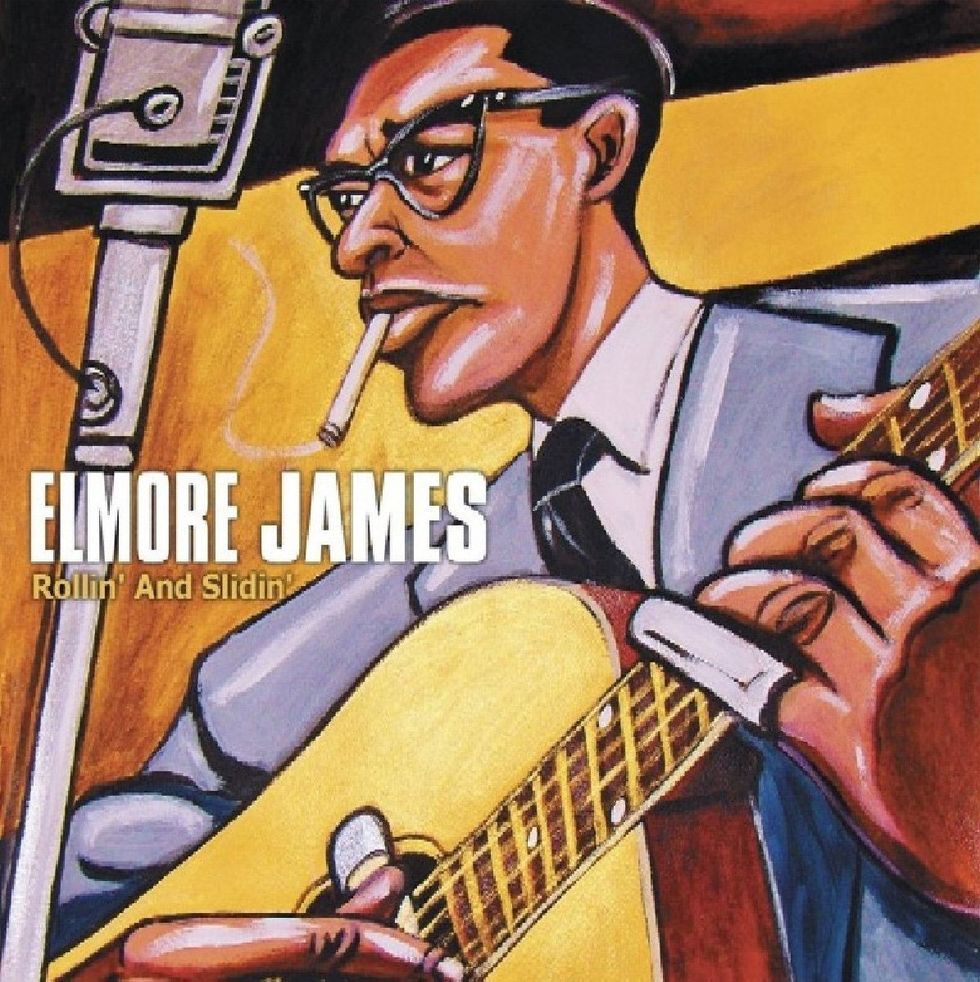
One of the pioneers of electric slide guitar, Elmore James influenced several generations of blues and rock guitarists, and his songs have been covered by Albert King, Eric Clapton, Jimi Hendrix, and Stevie Ray Vaughan.
Most players wear a slide on the pinky, with some notable exceptions, like Bonnie Raitt, who gives slide convention the bird by wearing her slide on her middle finger. Due to the nature of guitar tunings—especially open tunings—you can access the same chord and single-note sounds with either a long or short slide. But a shorter slide—measuring, say, 2" and covering four strings, verses the typical 2 1/2"-size of fretboard-spanning slides—offers more control over dynamics and fingering, especially when worn firmly on the pinky.
Short slides should fit snug. (Ideally, so should long slides.) A short slide that has too wide an interior diameter to grab the finger tightly is hard to use. It will travel up and down as well as wiggle from side to side. That’s no good. But secure pinky slides have multiple advantages over their longer cousins. A long slide immobilizes the joints of the finger it’s worn on. Most short slides will rest above the middle knuckle, which means the finger wearing the slide can bend to make more accurate contact with the strings and expand chords by fretting additional single notes. It’ll still be necessary to pin the slide with the adjacent finger to keep sufficient pressure on the strings while playing slide passages, but that requires less effort with a short, lightweight slide. A shorter slide also encourages developing more accurate, selective string work, and that’s a plus for any guitar approach. Also, when you’re between slide licks, a smaller, lighter slide feels less awkward dangling from a finger on the fretting hand as it waits to be pressed back into service.
Grab a guitar and follow along with author Ted Drozdowski who offers an excellent launching point for learning slide guitar.
Shorter slides with a snug fit offer more control than long slides because they allow the finger they’re worn on to bend. This allows you to move the slide more easily along the strings. Photo by Andy Ellis
Laurel or Hardy?
Weight is the next consideration and, not surprisingly, preferences vary wildly. Obviously, long slides weigh more than short slides of the same material, diameter, and wall thickness. It’s the latter measure that’s most important when considering a slide’s weight. Regardless of what a slide is made of, more mass equals more weight. It’s that simple.
Some players dig a thick, heavy slide. Lowell George, the guitar powerhouse who led the original lineup of Little Feat, used an 11/16" Craftsman socket wrench, available for about $6 at any hardware store. In contrast, Allman’s Coricidin bottles were thin-walled bantamweight containers, and vintage examples today occasionally sell for $200 on eBay.
A heavy slide will pin the strings with less effort and move along the neck with less resistance, with the slide’s weight helping momentum. This can make the slide’s motion a bit smoother and aid in slide vibrato—gently shaking the slide back and forth over a fret to make a note shiver. On the con side, a heavy slide can be harder to hold in place and control. Thinner, lighter slides must be pushed down a bit harder against the strings to make notes sound correctly and may glide less easily over the strings, especially on a beginner’s hand. Effects like slide vibrato and hammering will also require more work at first. But, again, thinner, smaller slides ultimately offer a greater degree of control.
Eventually, though, all the physics of performing with a slide become second nature. So whether to pick a Stan Laurel- or Oliver Hardy-weight slide is ultimately also a matter of personal taste and comfort. Whatever feels easy and natural is always the best choice, and unless you’re buying vintage Coricidin bottles, it’s easy to afford a few appealing slides and experiment until a No. 1 emerges.
Golem or Terminator?
The next choice is material. Will it be glaze-finished clay or gleaming chrome or steel? Dark brass or reflective ceramic or glass? Or, if you’re really old-schooling it, like Fred McDowell early in his career, perhaps a steak bone? Each type of material and its density will inform your tone and approach.
Let’s leave animal parts, pocketknives, beer bottles, Zippo lighters, wine glasses, et al. for another conversation. Metal slides are the most popular, with steel, chrome, and brass leading the pack. Steel and chrome slides produce the brightest, most screaming tones and can be acquired at any guitar shop, which is a plus if you’re on tour and lose your favorite slide. Think of the zinging, searing sound of Johnny Winter’s slide playing and you’ve got a fix on the voice of steel or chrome.
If you find metal appealing, but desire something that sounds less bright, brass and bronze fit the bill. Brass and bronze slides also tend to be a bit heavier than steel and chrome. Explore all the options. The late bluesman Iverson Minter, better known as Louisiana Red, was a fiend for both distortion pedals and metal slides, and tried every kind of metal tube he could lay his hands on, from thick-walled to skinny, and from aluminum to nickel to zinc. On a trip to Germany, he was invited to tour a metal distribution center, and Red asked his host to cut off a few inches of every tube in the joint that fit his pinky.
Fans of metal slides often carry their slides in their pockets along with coins and keys, so the metal will get scars that add character when applied to guitar strings. Some players even leave their slides outdoors in all types of weather to achieve a worn patina they believe will increase friction and make for a grittier tone in their slide attack.
A shorter slide can even be used for fretting an additional note in a chord. Photo by Andy Ellis
Glazed clay, ceramic, or glass slides are also terrific options. All three provide a smooth surface that glides comfortably over strings with little resistance. (Although some specialty versions of these slides offer a sandpaper-like surface on at least one section of their curvature for a grittier sound.) Since they are less dense than metal, they all sound warmer than metallic slides.
Elmore James played a glass slide—often an old bottleneck, sawn or cleaved with heated wire from a wine bottle. (Modern roots player Tony Furtado has a tutorial on making a bottleneck slide on YouTube, searchable as “Tony Furtado - How to make a Bottleneck Slide.”) So check out any of James’ classic versions of “Dust My Broom” to get an earful of how powerful a glass slide can sound on an amplified acoustic guitar, and we’ll return to him in a few moments.
In recent years, ceramic and glazed clay slides have come increasingly into vogue. Perhaps that’s because they can be given attractive color schemes. Like glass, they produce warm sounds, and the thicker their walls, the darker their tones—at least to my ears. And to my hands, they also feel supple and easy sliding against the strings.
While ceramic, glass, and clay all yield kinder, gentler tones than metal, they can also break when dropped. Not a problem with steel, chrome, brass, or bronze. And glass slides with thin walls can shatter during boisterous playing. That’s why jazzman Sonny Sharrock ditched glass slides for metal early in his career, although Sharrock also defied convention by palming a steel-guitar-style tone bar, rather than performing with a conventional tube-shaped slide on one of his fingers.
Some say the action on a roundneck guitar should be raised for slide, but that makes it harder to switch between slide and conventional fingering. Plus, with a little amp overdrive, most neck noise gets lost in the dirt. What’s most important is making solid, relaxed, and accurate contact with the strings. Photo by Andy Ellis
Glen or Glenda?
And then, we have the outliers. Although a fair number of traditional players use bottlenecks, I don’t recommend them for beginners. Wine bottles frequently have seams that can run afoul of smooth slide tones—purposefully or not—and their curves and bulbous upper lips make them hard for unskilled sliders to bring to bear on the strings with accuracy. Ditto for knives. Blades lack the density and smooth edging that’ll get a beginning slider off to an easy start.
There are also unconventional slides available, like ring slides, which can be spun into position or used by turning the back of your hand toward the strings, but any unnecessary hand movements interfere with the flow of making music, and it’s far harder to play slide with the back of your hand facing the fretboard than the front. Some slides also have cutaways on one end—supposedly to help them fit better on players’ fingers. Sometimes I find these comfortable, sometimes not. It depends on the slide and the shape of your hand.
The best way to zero in on which slide might be ideal for you is to locate a store with a generous slide display, bring in your favorite axe, and work your way through as many slides as possible until you find the ones that allow you to play comfortably. If you’re not lucky enough to have a good music shop nearby, investigate what your favorite slide players are using and order a couple of examples. Chances are you’ll hit at least one bull’s-eye.
Start Slidin’
Okay. You’ve got your guitar and you’ve got your slide, so let’s get started. And remember, the goal is to get you up and walking—not running—so don’t expect to play like Ry Cooder a half hour from now. But do expect to be playing blues slide at a rudimentary level.
First, tune your guitar to open E. That’s, from low to high, E–B–E–G#–B–E. We’re choosing open tuning because it’s easier than playing slide in standard tuning, yet there is some consistency between standard tuning and open E. In both tunings, the pitch of the lowest string and the two highest strings are the same, so chords will sound familiar and the high strings can also serve as a gateway to playing slide in standard tuning as your skills develop. Hey, open E is Derek Trucks’ go-to tuning, so if it’s good enough for Derek, it’s good enough for us!
Now, strum all the open strings. That’s an E chord, and E will be our I chord in the I-IV-V blues progression we’ll play. And let’s refer back to Elmore James’ “Dust My Broom” as a model for our first endeavor.
But before we start, there’s one more important thing you need to know. To cleanly sound a note with a slide, you need to place the slide directly above that note’s fret, not behind the fret, where you’d plant your finger when playing conventionally. Just remember, your slide rides on the string without pressing down against the frets—you’ll simply be gliding from note to note as you play.
So, on to “Dust My Broom.” Place your slide over the four high strings at the 12th fret and rake those strings with your picking-hand fingers or a flatpick while shaking the slide gently back and forth. That’s the I chord.
When you shake the slide, use your wrist and your elbow together. Shaking the slide from side to side over the chord or note you’re producing is what gives the technique its shimmer and voice-like magic. Eventually, when you’re comfortable playing subtler, single-note slide lines, you’ll depend more on your wrist for vibrato, akin to B.B. King’s classic “hummingbird” approach. Fun fact: King couldn’t get the knack for slide, so he developed his vibrato to approximate the sound of his slide-playing cousin, Bukka White.
While bottlenecks have a cool old-time vibe, they’re not the most practical slides. The round, protruding lips can catch on a guitar’s neck, extruded glass sometimes has seams that can scrape against the strings, and the curved shape takes a practiced hand to produce tones accurately. Photo by Andy Ellis
Keep playing the song’s chords along with James’ recording and you’ll find yourself alternating between sliding on the I at the 12th fret and playing simple, four-on-the-floor chording on the two low-tuned strings for the second half of the I, and all of the IV and V chords. That pattern will get you comfortable alternating between slide and basic open-E barre chords.
To add some rolling movement to the I chord, play the open 6th and 5th strings while alternately pressing on and off on the 5th string at the 2nd fret with your first finger. For the IV and V chords, we’ll simply transfer this motion up the fretboard: Move up to the A (IV chord, 5th fret) and B (V chord, 7th fret) note positions on the 6th string, and pin down the 6th and 5th strings with your first finger while you strum. And as you did on the I chord, press on and off on the 5th string, two frets higher than your A and B root notes on the 6th string, only this time use your third finger. Got it?
Feel free to experiment. Try playing the entire progression just with the slide, or try isolating some single strings with the slide, for fills or decoration. Then move along to other easily interpretable slide classics, like Muddy Waters’ “Can’t Be Satisfied,” and take your best shot. When you’re comfortable, pull out a delay pedal and shoot for something more stratospheric, like U2’s “Bullet the Blue Sky” or Pink Floyd's “Breathe.” Always remember to bring the slide firmly in contact with the strings, and never give a rat’s tail if you make a mistake or something doesn’t sound quite right. All troubles pass with practice.
I’ll leave you with two more nuggets. When you’re improvising around a chord with a slide—at least in this style of open tuning, which the blues elders called “Vestapol”— anything you play within the two frets below your anchor fret or three frets above it is going to produce cool-sounding notes. Get inside this five-fret box and play around. You’ll see.
And since the two high strings in open E are tuned identically to standard tuning, when you’re comfortable with the slide, you can play melodies or leads by following the notes on those strings the same way you would if you were playing pentatonic licks in standard tuning. Now, go start slidin’!
Get an earful of Elmore James at work on his 1951 classic recording of “Dust My Broom,” which was originally cut by Robert Johnson as “I Believe I’ll Dust My Broom” in 1936. James’ slide-powered version has become definitive, and it’s an easy-to-follow route to building your own basic slide guitar skills.




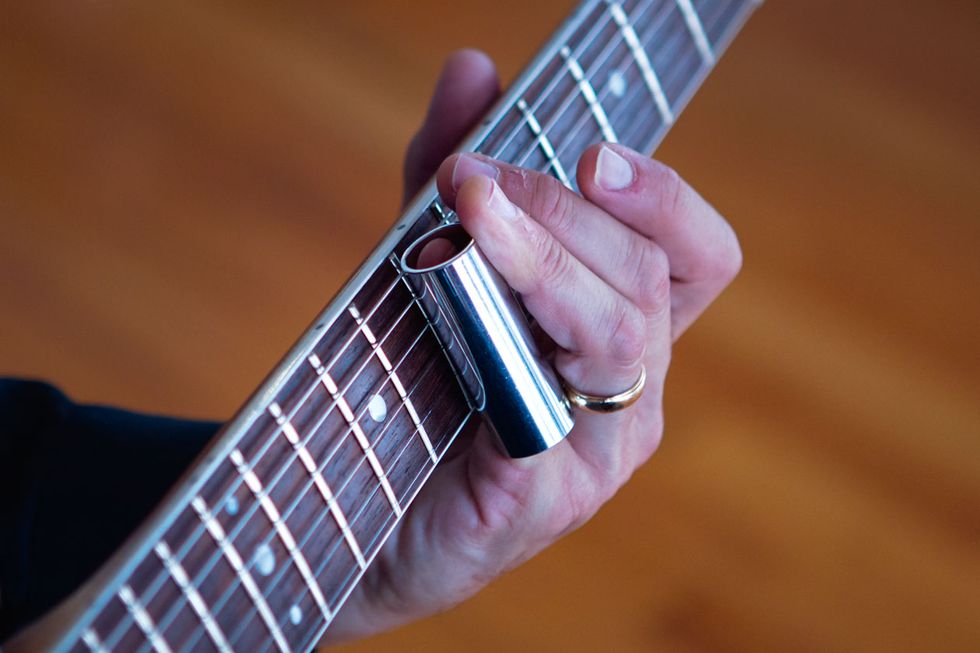
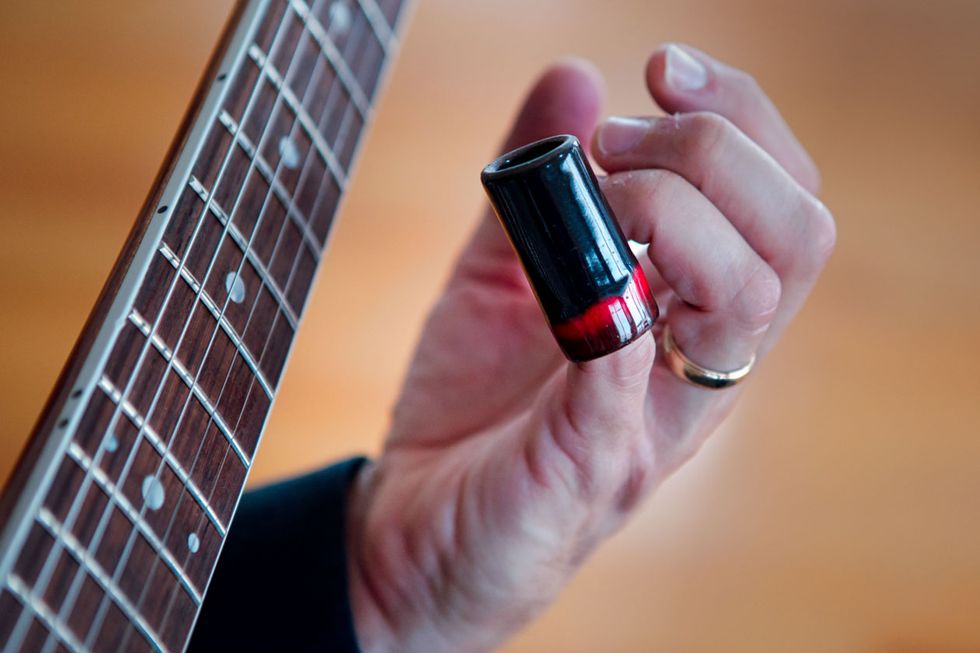
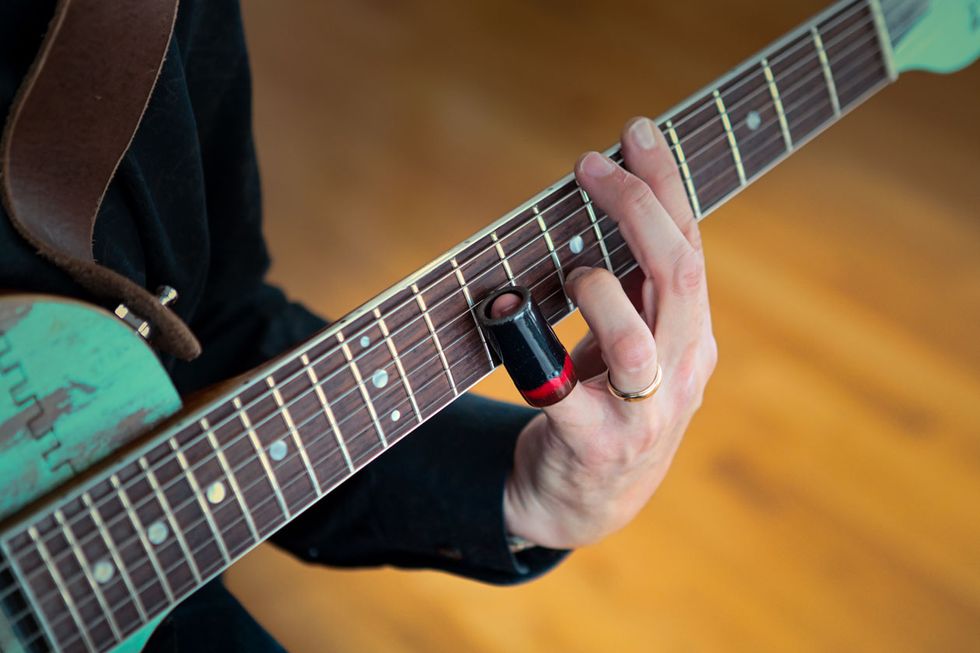
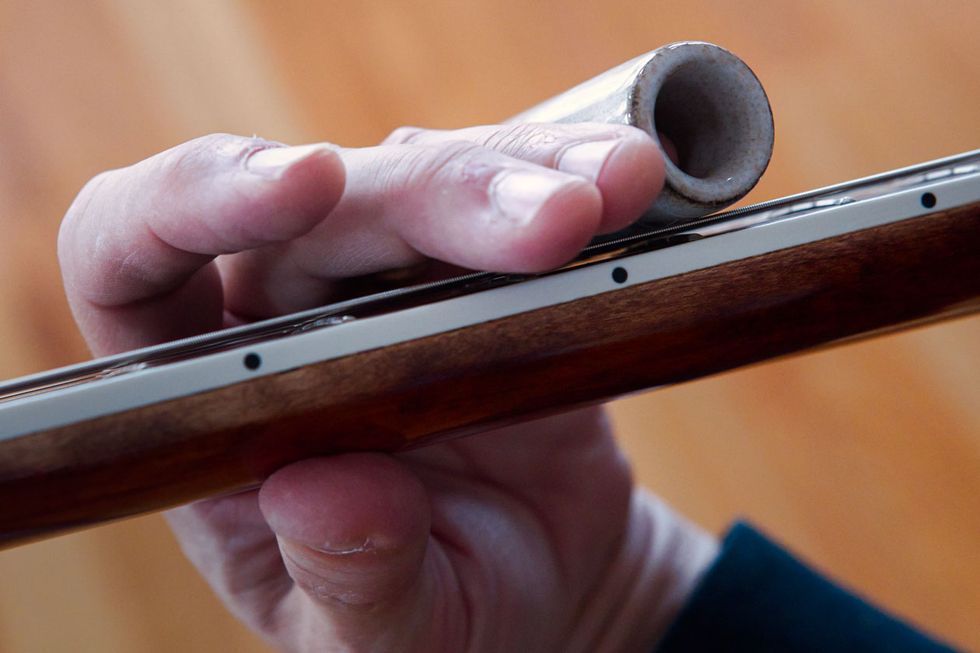
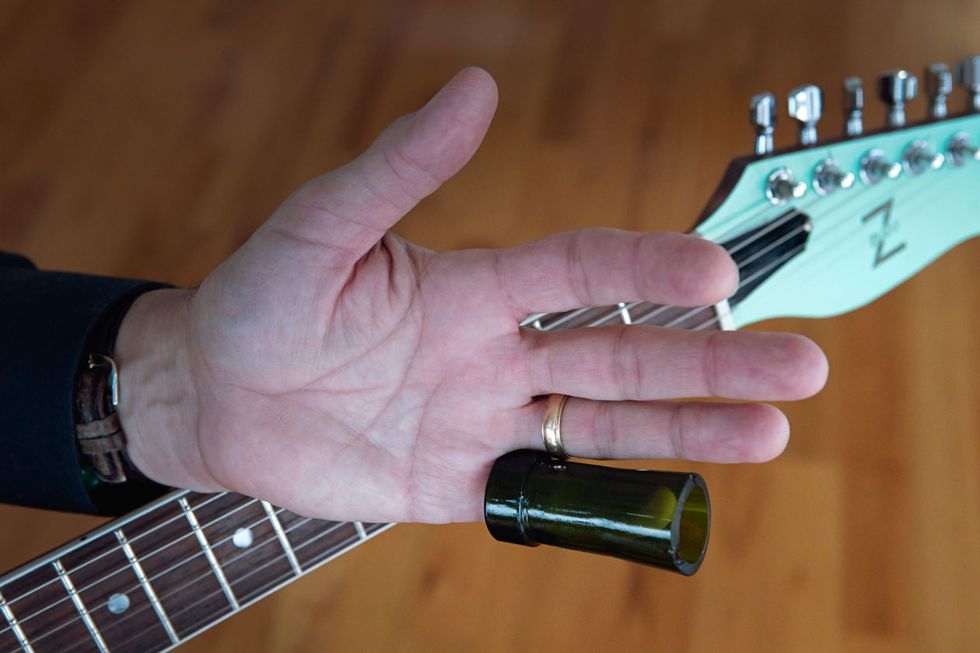
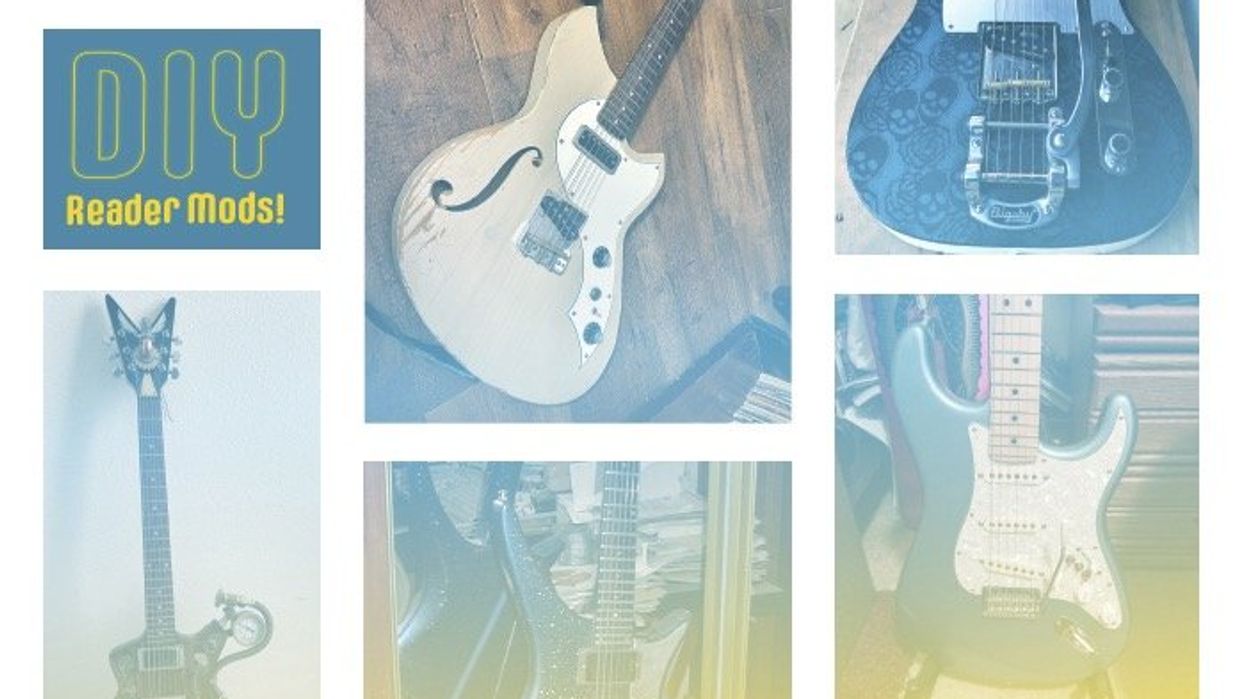
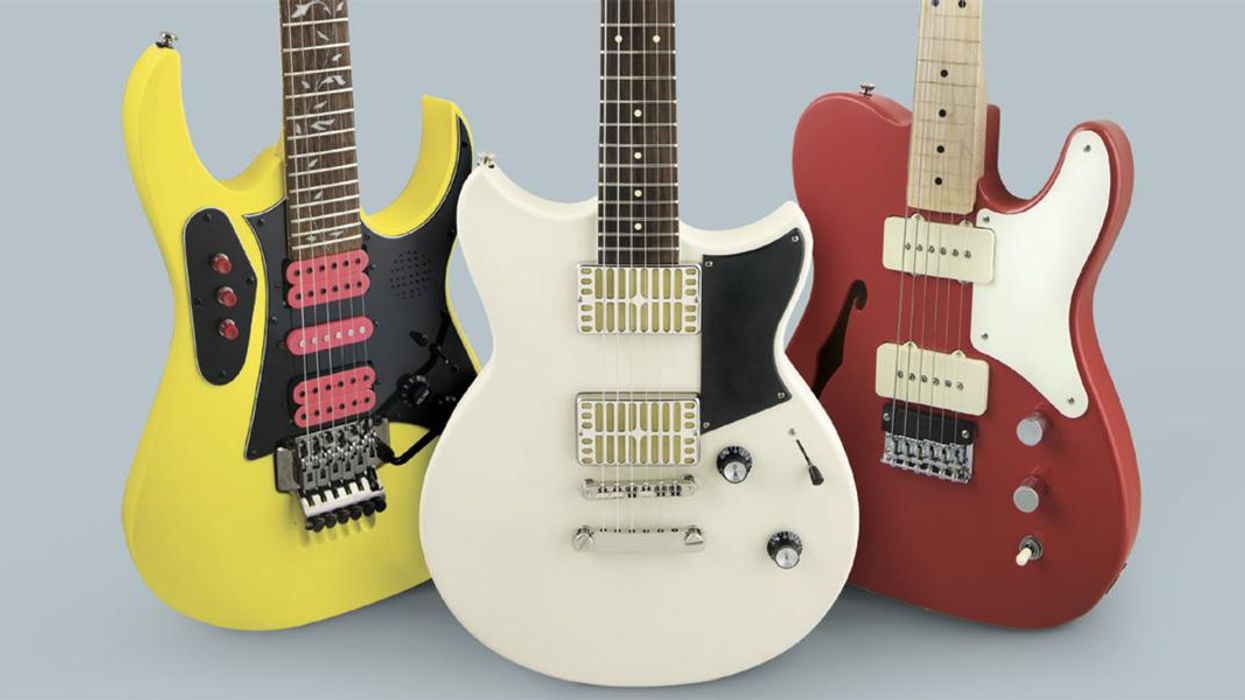
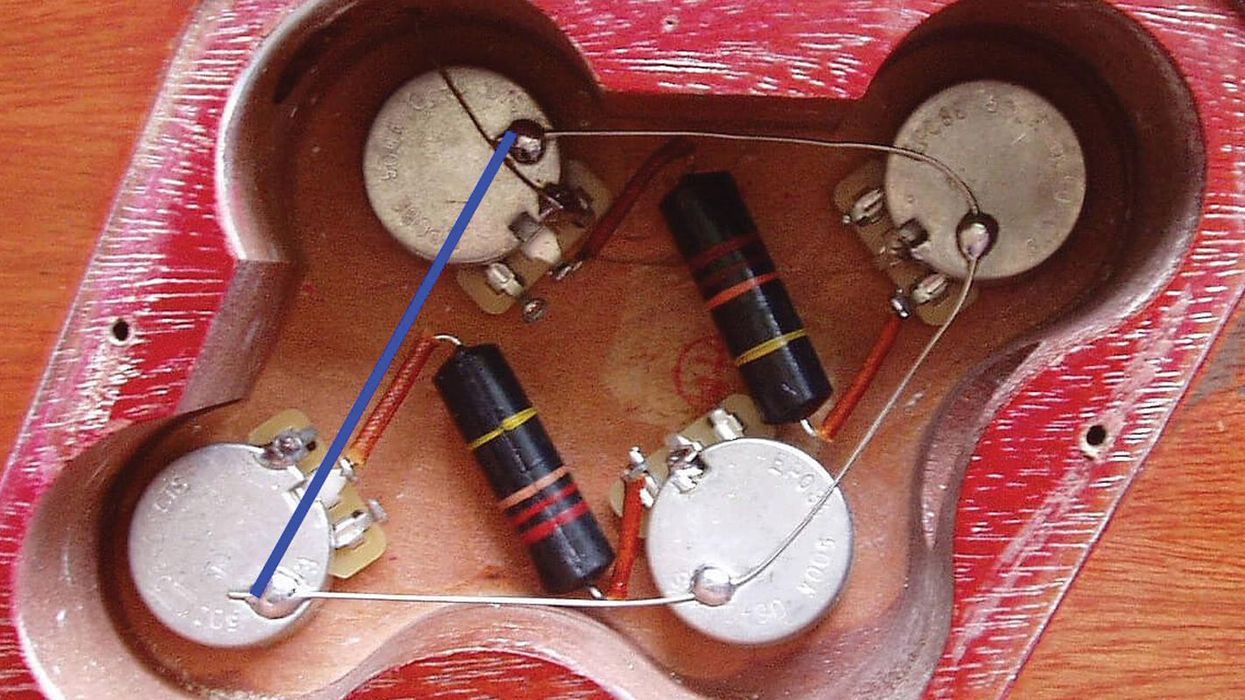
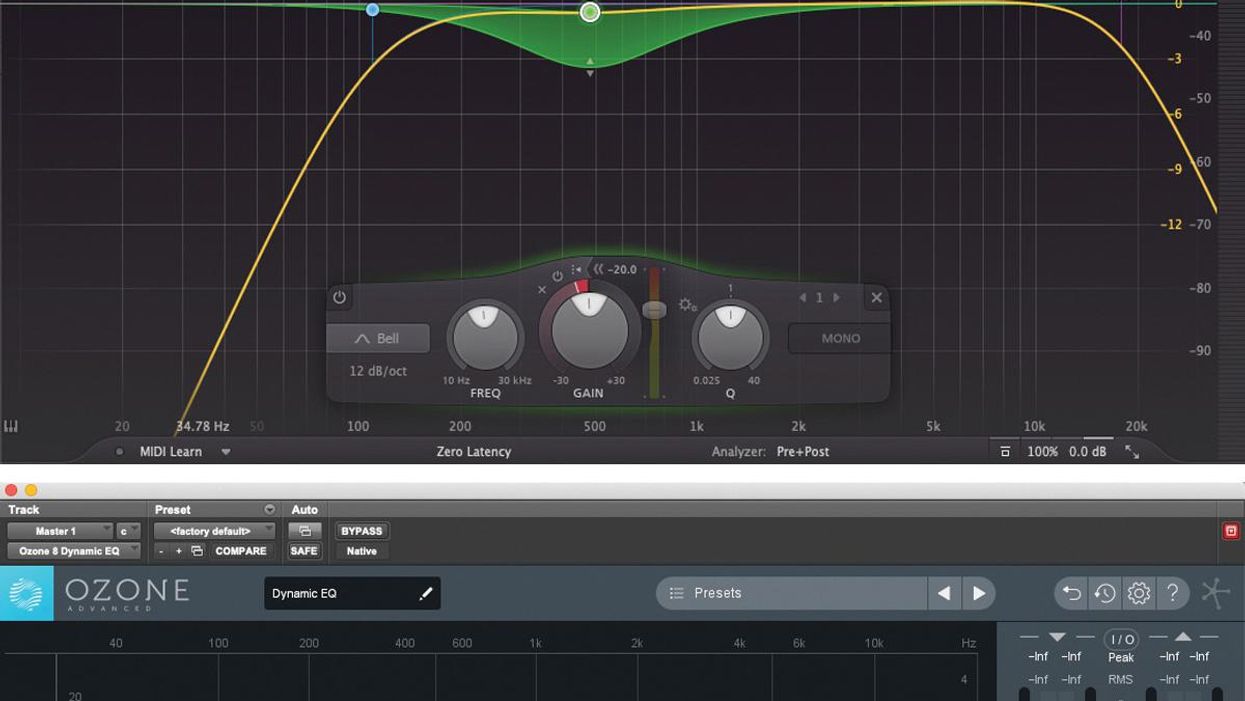



![Rig Rundown: Russian Circles’ Mike Sullivan [2025]](https://www.premierguitar.com/media-library/youtube.jpg?id=62303631&width=1245&height=700&quality=70&coordinates=0%2C0%2C0%2C0)









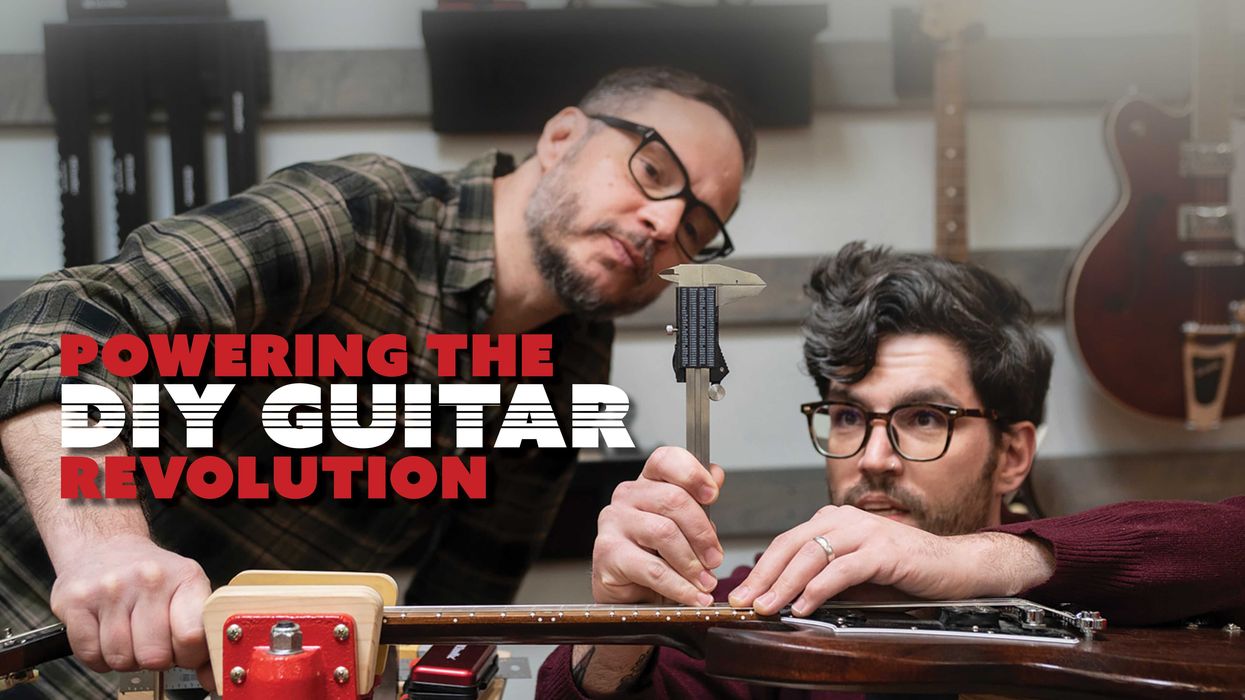
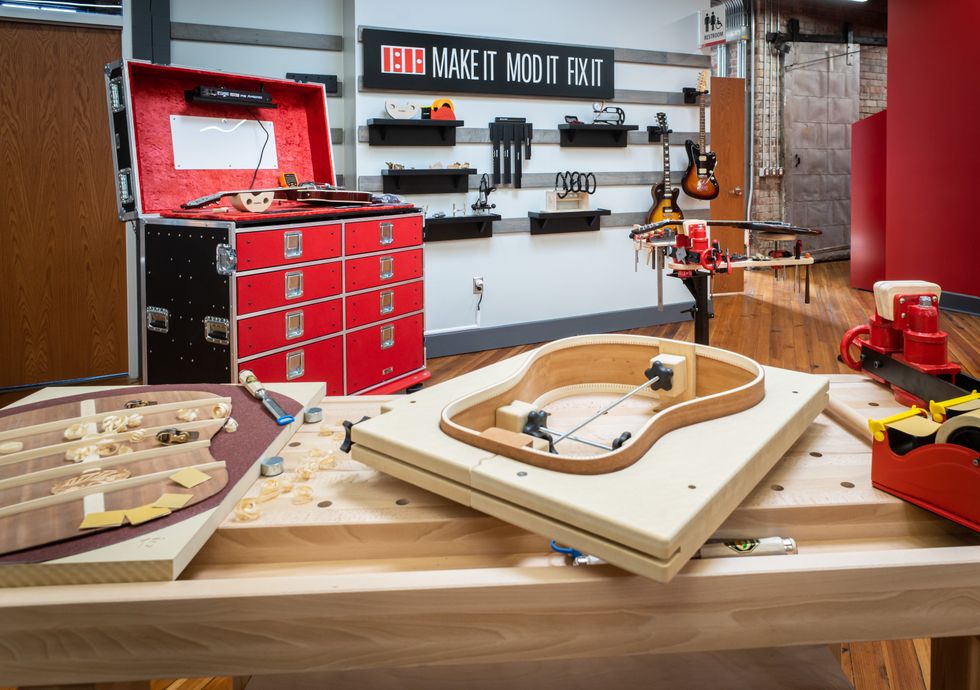

 The Allparts team at their Houston warehouse, with Dean Herman in the front row, second from right.
Photo by Enrique Rodriguez
The Allparts team at their Houston warehouse, with Dean Herman in the front row, second from right.
Photo by Enrique Rodriguez
